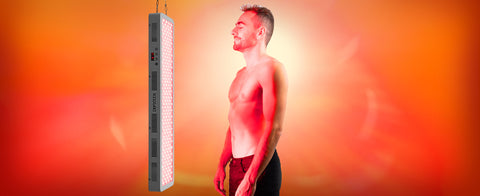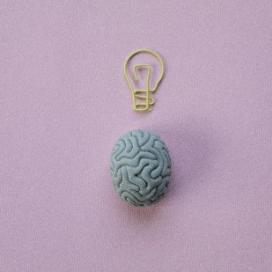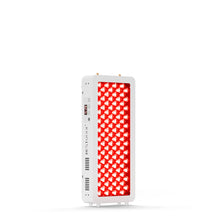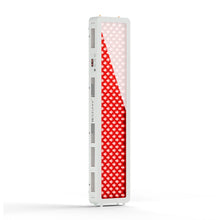
During the process of cancer treatment, almost all chemotherapy patients experience common side effects to varying degrees, such as fatigue, soreness, mouth ulcers, nausea and vomiting, low immunity, reduced white blood cells, itchy skin, and so on. According to oncology experts, the above side effects on the body can be minimized by taking timely measures to prevent them. Therefore, early prediction of side effects and effective treatment are essential to ensure successful treatment and improve long-term quality of life.

Today, we will explore the role of red light therapy in relieving common chemotherapy side effects.
Boost Chemotherapy Recovery With Red Light Therapy
Red light therapy, also called cold laser therapy, is a form of photomedicine that involves the application of red and near-infrared light (660-850 nm) wavelengths to the body's surface. Low-energy red light therapy converts light into energy to stimulate "photobiomodulation," which exerts positive biological effects without damaging the body due to its limited interaction with tissue. Red light therapy has clinically proven benefits in wound, burn, and incision healing, helping patients recover faster from surgery and reducing pain and inflammation. Ongoing research studies suggest that red light therapy may have potential benefits for patients undergoing chemotherapy in the following ways.

Speedy Healing of Oral Mucositis
Chemotherapy alters the mucosa of the mouth and often triggers oral mucositis, characterized by inflammation and sores in the mouth. At the same time, it is accompanied by symptoms such as dry mouth, mouth pain, chapped corners, mouth ulcers, and a decreased sense of taste. When oral mucosal disease appears, it causes difficulty in eating and unbearable oral pain. Once the disease is triggered, it will recur, directly affecting the patient's physical health, life, and work. Besides a good oral hygiene routine, red light therapy can effectively care for your teeth and gums during chemotherapy. Research studies done on children and young people with cancer undergoing chemotherapy suggested that "red light therapy can reduce the severity of oral mucositis symptoms such as oral pain and promote healing." (Redman et al., 2022). Similar systematic review studies by the International Society of Oral Oncology found that a "low-level laser with 650 nm wavelength was useful to prevent oral mucositis in adult cancer patients treated with high-dose chemotherapy." (Cesar et al., 2013)
As red lights directly act on cellular metabolism by stimulating mitochondria, the energy house of cells, it may contribute to the relief of oral mucositis symptoms by
- Immunity boost through modulating anti-inflammatory cytokines
- Promotes tissue repair and regeneration capacity
- Increases blood circulation
- Alleviates pain by analgesic effects
- Oral cavity sterilization
Restore Chemo Induced Skin Damage
When it comes to chemotherapy side effects, most people first think of vomiting, hair loss, constipation, etc., but in fact, there is also one of the most easily overlooked adverse reactions - skin changes, such as darkening of skin color, increased facial spots, rough skin, irritation, acne, skin urticaria, dermatitis, etc. Skin lesions, such as itching, cracking, etc., should be actively treated symptomatically; otherwise, the invasion of bacteria from the crack can easily cause skin infection, skin ulceration, oozing, bleeding, and other adverse conditions.
Many of these chemotherapy drugs produce a lot of inflammation, making recovery longer and skin irritation more painful. The natural anti-inflammatory effects of red light therapy lower pain and swelling and speed up skin healing. A recent extensive study evaluated the safety of red light therapy on the skin in cancer patients and reported that red light therapy "does not induce cancer in healthy skin cells and promotes skin cells rejuvenation and proliferation in damaged cells." Red light aids in developing new blood vessels, boosts immunity, and stimulates fibroblasts and collagen. In addition to its rejuvenating and anti-aging properties, red light therapy is a natural and safe way to speed up the healing process of burns, wounds, surgical incisions, and scars, which have been shown in many peer-reviewed clinical studies.
Bottom Line
Red light therapy improves the cancer patient's quality of life and reduces the recovery time and discomfort associated with oral and skin disease symptoms. In other fields of medicine, red light therapy has been studied and applied to varying degrees. As a relatively new treatment method in oncology, more research studies are needed to elucidate red light therapy's role in managing different chemotherapy symptoms. Due to its safety, non-invasiveness, and effectiveness, the application of red light therapy in the cancer field has a promising future.
References and Citations:
[1] Altun, & Sonkya, A. (2018). The Most Common Side Effects Experienced by Patients on chemotherapy drugs. Iran journal of public health, 47(8), 1218–1219.
[2] García Chíass, B., Figuero, E., Castelo-Fernández, B., Cebrián-Carretero, J. L., & Cerero-Lapiedra, R. (2019). Prevalence of oral side effect of chemotherapy and its association with periodontal risks: a cross sectional study. Supportive cancer care : official journal of the Multinational Association of Supportive Care Cancer, 27(9), 3479–3490.
[3] Tam, S. Y., Tam, C. W., Ramkumar, S., Khaww, M. L., Law, H. K. W., & Lee, S. W. Y. (2020). Review on the Cellular Mechanisms of LLLT Use in Oncology. Frontiers in oncology, 10, 1255.
[4] Redman, M. G., Haris, K., & Philips, B. S. (2022). Low-level laser (LLLT) for oral mucositis in children with cancers. Archives of Childhood Diseases, 107(2), 128–133.
[5] Migliorati, C., Hewson, I., Lalla, R. V., Antunes, H. S., Estilo, C. L., Hodgson, B., Lopes, N. N. F., Schubert, M. M., Bowen, J., & Elad, S. (2013). Systematic review of laser and other light therapy for the management of oral mucositis in cancer patients. Supportive Care in Cancer, 21(1), 333–341. https://doi.org/10.1007/s00520-012-1605-6
[6] Glass G. E. (2023). Photobiomodulation: A Systematic Review of the Oncologic Safety of Low-Level Light Therapy for Aesthetic Skin Rejuvenation. Aesthetic surgery journal, 43(5), NP357–NP371.











 Small
Small

 Moderate
Moderate

 Moderate
Moderate

 Moderate
Moderate

 Full
Full



